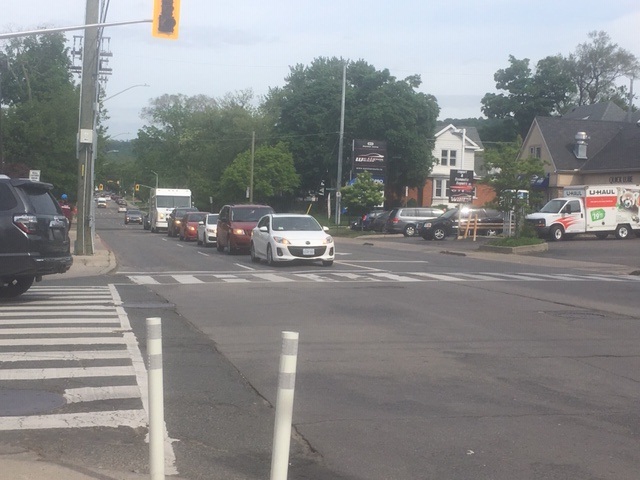A pilot project, which aims to make Aberdeen Avenue safer for pedestrians, will proceed.

Hamilton City Council, at a meeting on Wednesday, has given the green light to a reduction in the number of live traffic lanes from 4-to-2, between Dundurn and Queen streets, by allowing parking in the curb lanes.
The issue got heated during a meeting of councillors last Friday, when Ward 14’s Terry Whitehead was ejected from the virtual meeting by public works committee chair John Paul Danko over his questioning of staff.
Hamilton Mayor Fred Eisenberger referenced the dispute during the council meeting saying that while “we all get animated and heated about our passionate issues, it should never translate into personal attacks.”
Eisenberger adds the bottom line is “we can disagree, but not be disagreeable.”
The impacts of the so-called “road diet” on speeds and congestion on Aberdeen Avenue will be studied throughout the six-month pilot.
Ancaster Coun. Lloyd Ferguson warns the city won’t get a “true reading” because of reduced traffic volumes during COVID-19.
Ferguson notes that he made the trip from his home to city hall in 15 minutes earlier this week at 8:30am, a trip that averaged more than twice as long prior to the pandemic.
The lane reduction on Aberdeen Avenue has not only divided councillors, but residents of the west end neighbourhood, as well.
A petition signed by over 700 residents and presented to the committee by resident Alex Beer urged the city to keep four lanes moving.
Beer says those who signed the petition worry that slowing down drivers will mean “more traffic speeding through the neighbourhoods on either side of Aberdeen.
Supporters of the traffic calming measure, like Graham McNally, countered that action is needed because “when I walk my kids to school on that street, when I walk my dog on weekends, it doesn’t feel safe.”








Comments